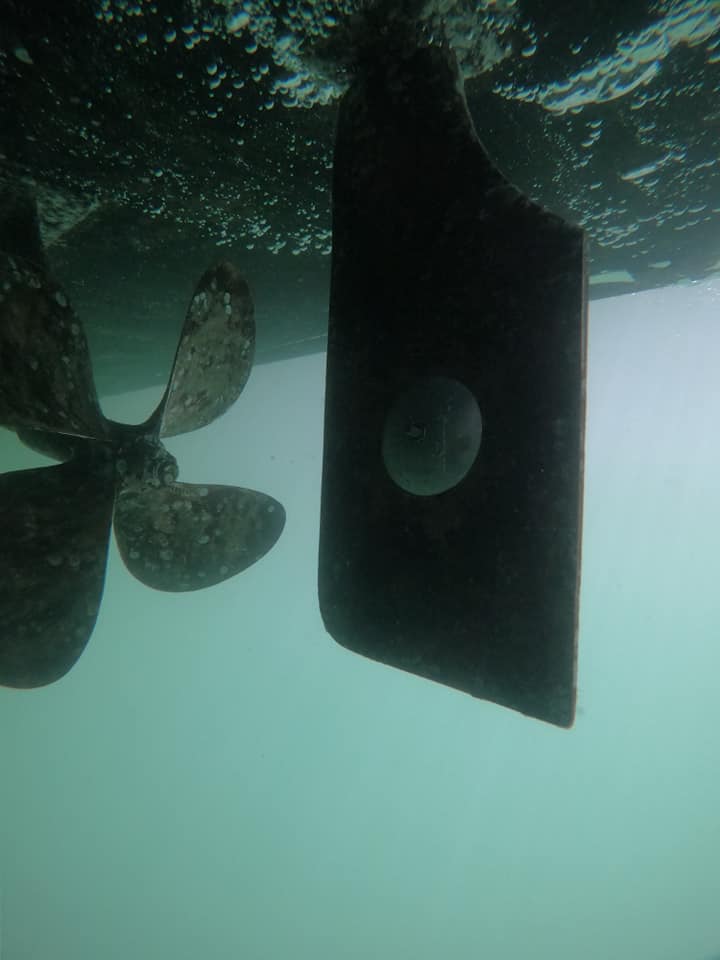Boat Bottom Cleaning is a crucial maintenance task for vessels that spend extended periods in the water. Unlike leisure boats used for recreational day outings, these boats contend with barnacle buildup and other marine life hitching a ride on their hulls. Left unchecked, this accumulation of sea life can significantly impact boat performance and fuel efficiency.
Key points about Boat Bottom Cleaning
- Purpose: The primary goal is to de-foul and remove the sea life buildup without damaging the hull coating.
- Areas Covered:
- Hull: The boat’s main body.
- Propellers, Shafts, and Running Gear: Ensuring smooth operation.
- Thru-Hull Intakes: Clearing blockages.
- Methods:
- In-Water Cleaning: Done while the boat is afloat. Experienced divers use non-abrasive materials like gloves, towels, and light-duty cleaning pads.
- Out-of-Water Cleaning: Performed during dry dock maintenance.
- Safety Considerations:
- Professional Services: Hiring a licensed underwater cleaning company is recommended for safety and thoroughness.
- Hazards: In-water cleaning can be dangerous due to busy marinas, safety lines, and electric shock risks.
- Frequency: The frequency of hull cleaning depends on the boat’s location. Coastal areas with rapid growth rates may require more frequent cleaning.
Remember, a well-maintained hull ensures optimal performance and prolongs the vessel’s life. 🚤⚓
Common types of hull coatings used in the maritime industry:
- Antifouling Coatings:
- Purpose: These coatings prevent marine organisms (such as barnacles, algae, and mollusks) from attaching to the hull. By minimizing fouling, they help maintain a smooth surface and reduce drag.
- Materials: Antifouling coatings often contain biocides (such as copper or silicone-based compounds) that deter marine growth.
- Application: Applied below the waterline.
- Benefits: Improved fuel efficiency and reduced maintenance costs.
- Examples: Copper-based coatings (historically used), silicone-based alternatives12.
- High-Performance Hull Coatings:
- Purpose: These coatings reduce hull resistance through water, leading to lower fuel consumption.
- Application: Suitable for all vessel types and ages.
- Frequency: Ships are generally recoated every fifth year.
- Potential Savings: High-end products can reduce overall ship resistance by up to 8%, resulting in 1% to 4% fuel consumption reduction3.
- Ideal for: Full-bodied ships like bulkers and tankers.
- Self-Polishing Coatings:
- Purpose: These coatings release biocides gradually over time, maintaining their effectiveness.
- Advantage: Suitable for vessels with varying speeds and activity levels.
- Longevity: Requires less frequent recoating compared to traditional antifouling paints.
- Epoxy Coatings:
- Purpose: Provides excellent protection against corrosion and abrasion.
- Application: Used as a primer or intermediate coat.
- Benefits: Enhances durability and extends the life of the hull.
- Silicone-Based Coatings:
- Advantages: Less toxic to non-target organisms compared to copper-based coatings.
- Suitability: Tested for use in the Baltic Sea region1.
Remember that choosing the right hull coating depends on factors such as vessel type, operating profile, and trading areas. Proper maintenance and periodic recoating are essential for optimal performance and longevity. 🚢⚓

